 How are you responding to upset customers?
How are you responding to upset customers?
No matter what you sell or what industry you're in, you're going to experience negative word of mouth.
You know, those customers who are expressing their complaints on social media.
It just happens.
Things break, problems come up and employees have bad days. But it's how you handle it that separates you from everyone else.
Remember: Negative word of mouth is an opportunity.
A great response strategy can convert angry and upset customers into loyal, raving fans. The rule of thumb is that while unhappy customers talk to 5 people, formerly unhappy customers you win back talk to 10.
So get out there and embrace the negativity. Start responding. Here are 10 steps you can take to stop the negative, earn new fans and generate a ton of respect.
#1: You Can't Respond to Conversations You Don't See
Great response starts with great listening.
- Set up Google Alerts for your brand and industry keywords.
- Keep a close eye on your Facebook page.
- Listen on Twitter.
- Depending on the type of business you have, read reviews on sites such as Yelp, TripAdvisor and Zagat.
- Make a list of any forums or communities where your customers congregate and regularly check in on them.
Whether you're paying attention or not, the conversations are happening. But a great listening program makes it easier for you to catch negative buzz and spot issues before they build momentum and become much harder to turn around.
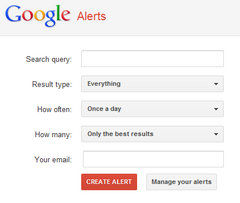
#2: Determine if it's Worth a Response
Not all negative comments are worth a response, and not all critics are worth trying to win over. Sometimes, as hard as it can be, it's best just to move on.
Avoid these situations:
- The criticism is on a really small blog or forum, and your response will only bring attention and credibility to an issue nobody saw in the first place.
- It's a blatant attack that's clearly rude and outrageous—and anyone who reads it can see the critic has a personal problem.
- A known crackpot who is only looking to pick a fight.
There's just no way to win in these scenarios. So stay out, move on, keep your head up and focus on the wrongs you can right.
#3: Act Quickly
When you're facing negative word of mouth, time is not on your side. The longer you wait to respond, the angrier the customer will get—and the more likely others will pick up on the issue and spread the negative buzz.
Get World-Class Marketing Training — All Year Long!
Are you facing doubt, uncertainty, or overwhelm? The Social Media Marketing Society can help.
Each month, you’ll receive training from trusted marketing experts, covering everything from AI to organic social marketing. When you join, you’ll also get immediate access to:
- A library of 100+ marketing trainings
- A community of like-minded marketers
- Monthly online community meetups
- Relevant news and trends updates
At the very least, say this:
“Hi, my name is ____ and I hear you. We're looking into it now, and I'll get back to you as soon as possible. If you have any questions, contact me directly at _____.”
A message like this does two things:
- The ranter knows he or she has your attention—there's much less incentive to keep spreading the anger and
- It makes a real person with real contact info available, so if the person is still angry, you've at least specified a place to vent other than online.
#4: Speak Like a Human
The only thing worse than ignoring upset customers is to respond with a canned corporate response. If you thought they were mad before, wait until you see how they react to an excerpt of your policy terms and fine print.
Show empathy, communicate in a friendly tone and use your real name. And if the forum supports it, it helps to include your actual photo.
It's easy to yell and scream at an anonymous company. But when someone shows up and says, “Hi, this is Emily and I'm so sorry for the trouble…” it changes everything.
The critic now realizes he wasn't yelling at a giant, faceless company. He was yelling at Emily. Quickly, the anger fades—and you'll often get an apology.
Check out how Zappos replies to this fan. It's human; it's friendly. And even though they couldn't immediately fix the problem, you can bet this fan will be back.
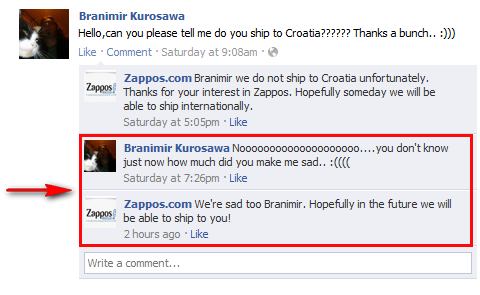
#5: Offer a Real Apology or Don't Apologize
A strong, direct apology will always earn more respect than a flimsy, “kinda-sorta” apology.
Consider the difference between an apology like “We're sorry you feel that way” to “Absolutely, positively unacceptable”—which was the headline to FedEx's blog post after a delivery driver was caught throwing a package over a customer's fence. The post included this straightforward video from Matthew Thornton, a senior vice president at the company:

Discover Proven Marketing Strategies and Tips
Want to go even deeper with your marketing? Check out the Social Media Marketing Podcast! Publishing weekly since 2012, the Social Media Marketing Podcast helps you navigate the constantly changing marketing jungle, with expert interviews from marketing pros.
But don’t let the name fool you. This show is about a lot more than just social media marketing. With over 600 episodes and millions of downloads each year, this show has been a trusted source for marketers for well over a decade.
https://www.youtube.com/watch?v=4ESU_PcqI38
And it doesn't get much better or more direct than Jeff Bezos' apology for how they handled pulling copies of 1984 and other novels off Kindles:
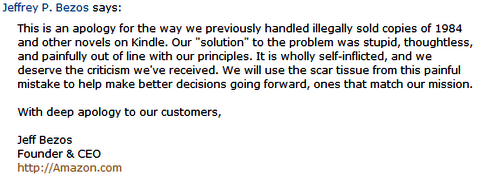
#6: Offer to Make it Right
Apologizing is part of turning around negative word of mouth, but to actually fix a problem is how you really win over critics.
We all make mistakes. It's how we fix them that people remember.
At burrito chain California Tortilla, making it up to customers is part of every response they send when someone is upset. It's this simple:
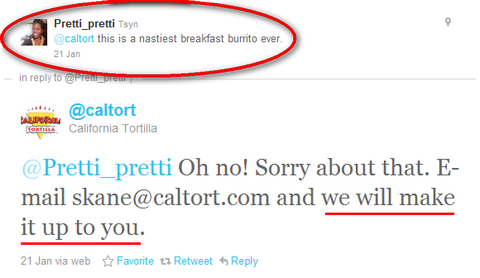
#7: Never Get into a Fight
Any time you win an argument online, you're losing. All anyone really remembers is that you're combative.
This doesn't mean you can't respond, explain your side of the story and start a conversation. You just need to be in the right mindset:
- Don't get emotional.
- Remember, it's a real person. Just as they see you as a faceless company, it's easy to see them as just another complainer.
- The critic is actually doing you a favor. They're helping you learn to be a better company. For every person who actually speaks up, many more walk away quietly, never to return.
For more on how to reply, check out this quick explanation from Jeff Diamond of Oakland's Farmstead Cheeses and Wines:
https://www.youtube.com/watch?v=RJ_DJGDIIMM
#8: Keep the Discussion in the Open
When a negative issue comes up, a common gut reaction is to ask to move the conversation offline. But when you do this, the world can't see all the effort you put into fixing the problem.
Nobody sees the private email where you give that sincere apology. We can't search for that phone conversation where you politely explain why the situation happened in the first place.
But when you do it online, in public, you earn word of mouth. For the same effort and cost, thousands more people see that you actually care about customers. Plus, you save on all the people who now don't need to call in (or write a similarly angry post) to find an answer to the same question.
Graco's quick and transparent use of Twitter during a recall of more than 2 million strollers, for example, helped get an important message out much more quickly, showed customers how much they cared and it just might have saved some lives, too.
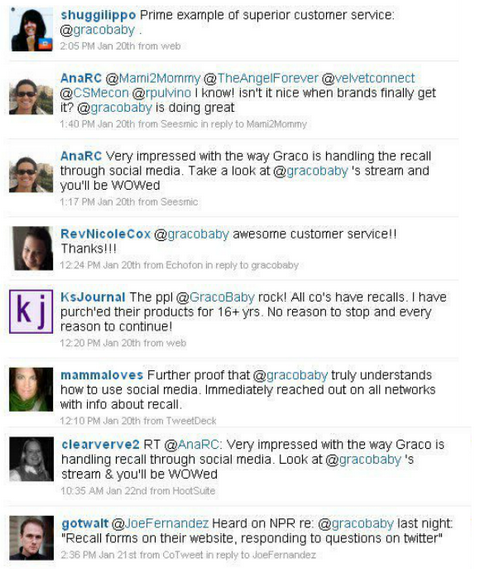
#9: Use Fans and Third-Party Sources to Help Tell the Story
What you say about yourself isn't as powerful as what others say about you. It's true when people are promoting you, and it's true when people are calling you out.
When their brand was under attack from a competitor-led PR campaign, UPS' Debbie Curtis-Magley and her team pointed to third-party content from news articles and industry experts to help explain the full story.
And even more powerful than experts can be the voice of your fans. You never want to put them in an uncomfortable situation, but it's OK to ask for help sometimes.
For example, a blogger might share how he's frustrated with a particular product feature. In which case, you might turn to your Facebook or Twitter fans with this message:
“Hey guys! Chris over at [blog name] is having trouble with [feature]. Can anyone share how they're using it?”
#10: Involve Them in the Fix
If someone's criticizing you, it's often just a form of tough love. They're doing it because they care. They see potential, and they want you to do better.
So instead of seeing them as critics, start looking at them as frustrated fans that might have some worthwhile ideas.
On one hand, Dell's IdeaStorm is just a big list of things people think they're doing wrong. But it's actually a release valve—a proactive community that gives people with ideas, suggestions and complaints a place to share and vote on their favorites.

A platform like IdeaStorm isn't right for everyone, but giving your biggest critics a way to get involved is. Try inviting yours to customer advisory boards, beta tests of new products and brainstorming sessions.
See! Negative word of mouth doesn't have to be so bad after all.
How do you handle critics? How are you making the most of negative word of mouth? Leave your questions and comments in the box below.
Attention Agency Owners, Brand Marketers, and Consultants

Introducing the Marketing Agency Show–our newest podcast designed to explore the struggles of agency marketers.
Join show host and agency owner, Brooke Sellas, as she interviews agency marketers and digs deep into their biggest challenges. Explore topics like navigating rough economic times, leveraging AI, service diversification, client acquisition, and much more.
Just pull up your favorite podcast app, search for Marketing Agency Show and start listening. Or click the button below for more information.

